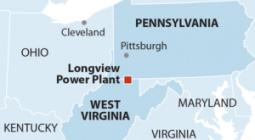U.S. shale pioneer Chesapeake Energy files for bankruptcy.

Chesapeake Energy, the poster child of the U.S. shale revolution, filed for bankruptcy protection on Sunday. The move comes as the company and industry more broadly has been rocked by a drop in oil and gas prices amid the coronavirus pandemic.
Chesapeake said that $7 billion in debt will be wiped out through the restructuring. The company has secured $925 million in debtor-in-possession financing in order to continue operations during the bankruptcy process. In addition, Chesapeake has secured an agreement in principle from certain existing lenders for $2.5 billion in debt financing on emergence from bankruptcy, as well as a backstop commitment for $600 million in new equity.
Franklin Resources and Fidelity are among the biggest creditors, according to people close to the company, and they will be among the primary equity holders following the company’s restructuring. The company will continue operations at a much reduced capacity, with a handful of gas rigs and no oil rigs, according to those familiar with the company’s plans.
“We are fundamentally resetting Chesapeake’s capital structure and business to address our legacy financial weaknesses and capitalize on our substantial operational strengths,” CEO Doug Lawler said in a statement.
Chesapeake Energy was founded in 1989 by Aubrey McClendon. An early pioneer of horizontal drilling, he built the company into a key player in the U.S. gas industry. At its peak, Chesapeake had 175 operating rigs, with operations across the U.S. including in Texas, Louisiana, Pennsylvania and Ohio. But the company took on a lot of debt to fuel its rapid expansion, and from 2010 to 2012 spent $30 billion more in drilling and leasing than it made from its operations.
Chesapeake’s downturn is not unique. Whiting Petroleum is among the other once great drillers that couldn’t survive a historic plunge in oil prices. The company filed for bankruptcy protection on April 1.
29 June 2020
IEEFA




